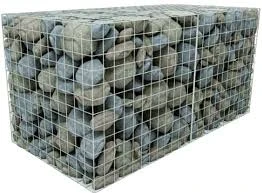-
 Phone:
Phone: -
 Email:
Email:

rock netting
The Evolution and Impact of Rock Netting in Civil Engineering
Rock netting, a vital component in the field of civil engineering, has gained prominence in recent years due to its effectiveness in preventing rock falls and landslides. This innovative technique employs the use of strong, flexible mesh materials to secure loose rocks and maintain the stability of steep slopes, cliffs, and mountainous regions. As infrastructure development continues to expand, understanding the significance and application of rock netting becomes increasingly crucial for engineers and construction professionals.
The concept of rock netting is rooted in the need for safety and risk mitigation in various terrains prone to geological instability. Traditional methods of rock stabilization, such as retaining walls and rock anchors, have been prevalent for decades. However, these solutions often come with limitations, including high costs, a lengthy installation process, and potential environmental disruption. Rock netting offers a solution that is not only cost-effective but also minimizes the ecological footprint of construction projects.
Rock netting systems are typically composed of high-tensile steel wire or synthetic fibers, designed to withstand harsh weather conditions and mechanical stress. The netting is anchored to the underlying rock, creating a barrier that catches loose material and prevents it from sliding or falling. This system is particularly beneficial in areas with frequent rockfalls, such as highways, railways, and mountainous hiking trails, where the safety of both infrastructure and individuals is paramount.
One of the key advantages of rock netting is its versatility. It can be applied in various geological settings and terrains, making it suitable for a wide array of projects. From highways and tunnels to recreational trails, rock netting can be customized to meet specific needs and challenges. Furthermore, its implementation is relatively quick, allowing for minimal disruption to ongoing operations and reducing overall project timelines.
rock netting

Another critical aspect of rock netting is its role in environmental conservation. By stabilizing slopes and preventing erosion, rock netting helps to preserve local ecosystems and maintain biodiversity. Loose rocks and debris can be harmful to flora and fauna, disrupting habitats and causing sedimentation in nearby water bodies. By mitigating the risks associated with landslides, rock netting contributes to the protection of natural resources and the sustainability of the surrounding environment.
In addition to its practical benefits, rock netting also presents challenges that engineers must address. The effectiveness of rock netting systems relies on proper site assessment and design tailored to the specific geological conditions. Factors such as rock type, slope angle, and weather patterns must be carefully evaluated to ensure optimal performance. Moreover, ongoing maintenance is essential to address wear and tear, as well as to monitor the stability of the vegetation that may grow behind the netting.
Global advancements in technology have also influenced the development of rock netting systems. Innovations in materials science have led to stronger, more durable netting options, while monitoring technologies, such as remote sensing and geospatial analysis, allow engineers to assess slope stability in real time. These advancements not only enhance the safety and reliability of rock netting but also provide valuable data for future projects.
In conclusion, rock netting stands as an essential practice in modern civil engineering, offering a reliable and environmentally friendly solution for slope stabilization. As communities continue to develop in geologically challenging areas, the demand for effective risk mitigation strategies will only increase. By prioritizing innovations in rock netting, engineers can address safety concerns while promoting sustainability and resilience in infrastructure development. As the field evolves, ongoing research and adaptation will be key to harnessing the full potential of this indispensable tool in the quest for safer, more stable environments.
-
Wire Mesh for Every Need: A Practical SolutionNewsJul.25,2025
-
Steel Fences: Durable, Secure, and Stylish OptionsNewsJul.25,2025
-
Roll Top Fencing: A Smart Solution for Safety and SecurityNewsJul.25,2025
-
Cattle Farm Fencing Solutions for Maximum SecurityNewsJul.25,2025
-
Affordable Iron Binding Wire SolutionsNewsJul.25,2025
-
Affordable Galvanized Wire SolutionsNewsJul.25,2025
-
Wire Hanger Recycling IdeasNewsJul.25,2025








